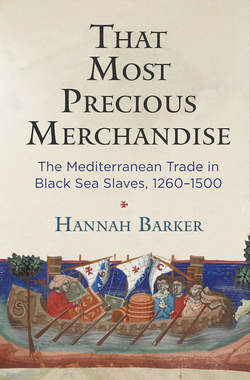That Most Precious Merchandise

Реклама. ООО «ЛитРес», ИНН: 7719571260.
Оглавление
Hannah Barker. That Most Precious Merchandise
Отрывок из книги
That Most Precious Merchandise
Ruth Mazo Karras, Series Editor
.....
In other words, Pontano thought it better for Orthodox Christians from the Black Sea to be purchased by Catholics and serve them in repayment than to be purchased by non-Christians.
In merchant circles, respect for property rights was sometimes given priority over the threat of slave conversion. This caused an outcry in 1445 when a fourteen- or fifteen-year-old slave described as a Christian from the land of Prester John (probably Ethiopia) fled from the house of his Muslim master in Alexandria to a ship belonging to the famous French merchant Jacques Coeur.100 The ship captain took the boy to Montpellier, where he was placed as a servant in the archbishop’s household. But Coeur feared that French galleys might no longer be allowed to trade in Egypt because his captain had violated an agreement with the Mamluks about the return of fugitive slaves. He ordered the boy shipped back; upon his return to Alexandria, the boy converted to Islam. This shocked the French Church, especially the religious orders dedicated to ransoming Christian captives from Muslims. French merchants who did business with Muslims maintained that Coeur had acted correctly. The resulting controversy played a role in Coeur’s fall from royal favor.
.....